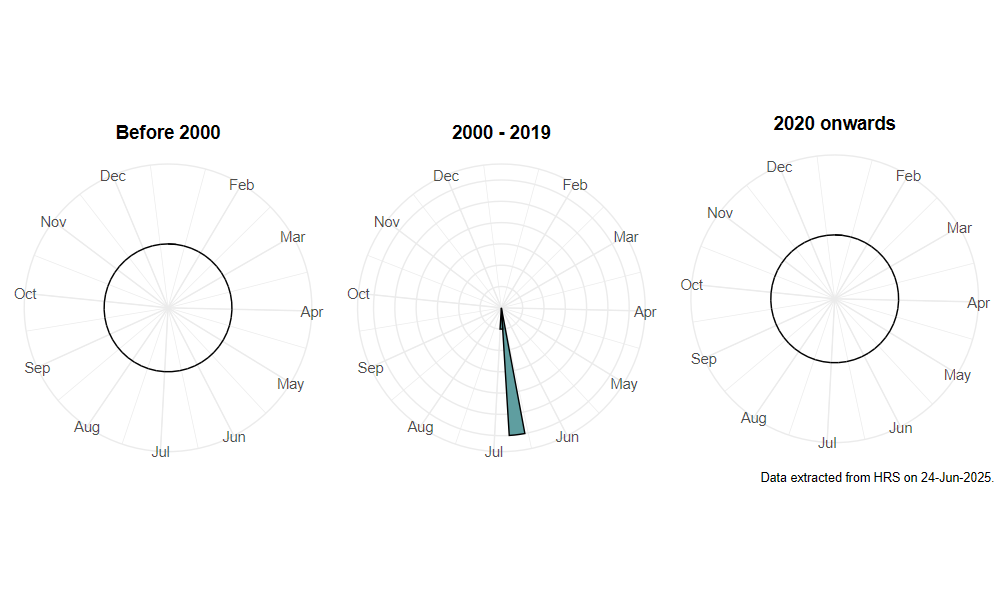Cheilosia ahenea (von Roser, 1840)
Identification
Identification difficulty = 5. ![]()
![]() according to Ball & Morris, 20241
according to Ball & Morris, 20241
Synonymy
Cheilosia laskai Speight, 1978 in Stubbs & Falk (1983)2.
Biology
Very little is known about its ecology. The larva is unknown but may be a stem or root borer as most other members of the genus adopt this larval feeding strategy. The known locality in Great Britain is Machair grassland but, it has also been found on limestone grassland and adjacent sand dune systems in western Ireland.
Flight period
The following plots show the number of unique records per week excluding those reported to be of immature stages.

Status
VULNERABLE - Ball & Morris, 20143.
Distribution
Known from just a single location on Islay (Parker, 2001). It may prove to be more widespread on dunes of the western Isles as it is also known from several localities along the west coast of Ireland.

-
Ball, S., & Morris, R. (2024). Hoverflies of Britain and Ireland. WILDGuides (3rd ed.). Oxford: Princeton University Press. ↩
-
Stubbs, A., & Falk, S. (1983). British Hoverflies: An Illustrated Identification Guide (1st ed.). Reading: BENHS. ↩
-
Ball, S., & Morris, R. (2014). A review of the scarce and threatened flies of Great Britain. Part 6: Syrphidae. ( No. 9). Species status (pp. 1–130). Peterborough: JNCC. ↩